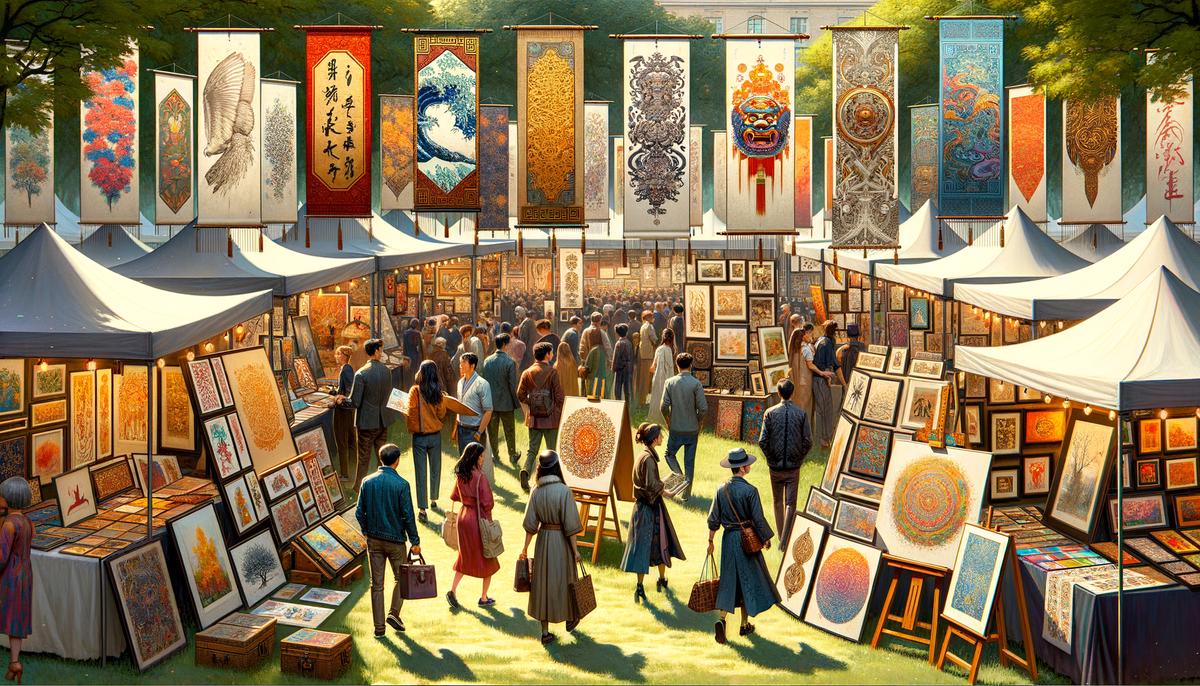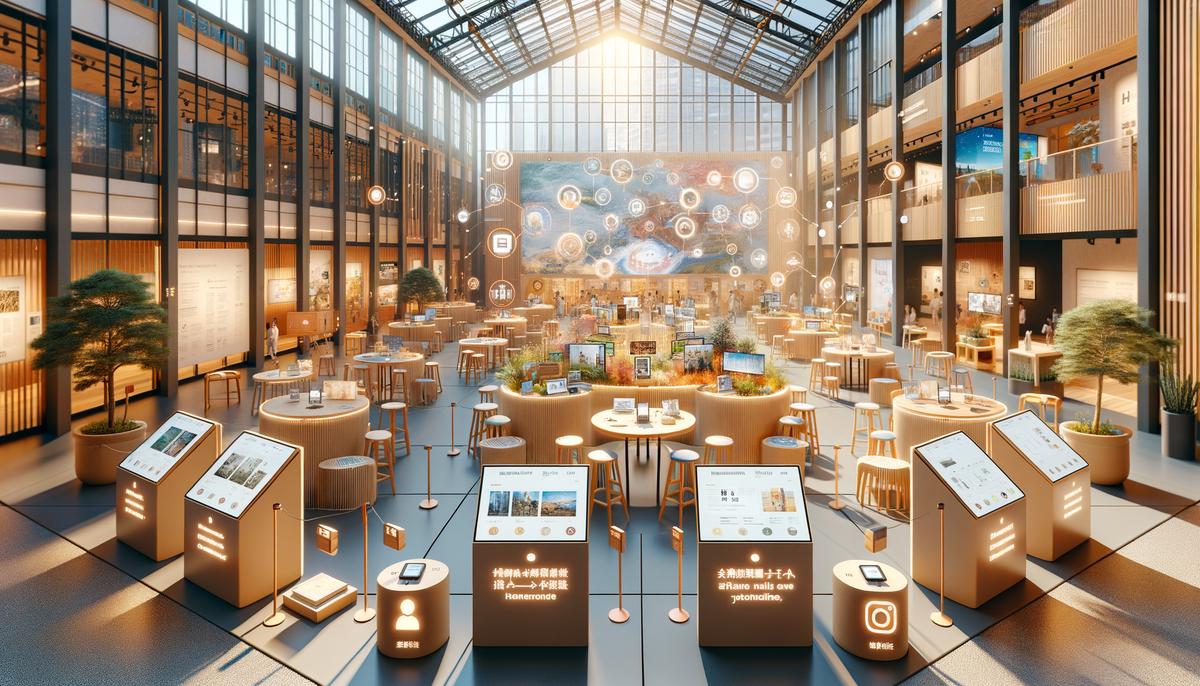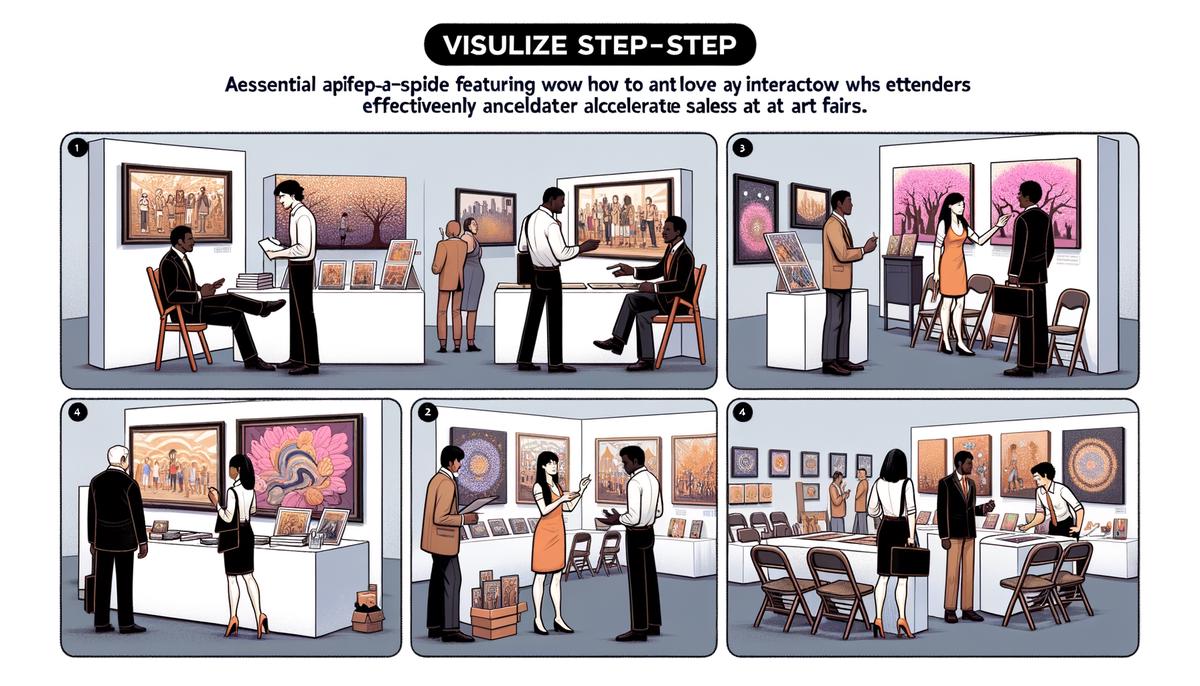Are you ready to show off your artwork to the world? Setting up an exhibition can be a thrilling journey, allowing you to share your creativity and hard work with an eager audience. The trick lies in carefully selecting the artwork that captures your unique style and arranging your space in a way that draws people in. With a bit of planning and enthusiasm, you’re all set to create a memorable experience for everyone who steps into your exhibition space. Let’s dive in and explore how to make your art stand out and ensure your exhibition is a smashing success.
Selecting Your Artwork for Display
Choosing the Right Artwork to Exhibit at an Art Fair
Hitting an art fair can be your big break or a fantastic way to connect with other artists and buyers. However, the biggest puzzle is figuring out which pieces of your artwork will make the crowd stop, stare, and hopefully buy. Don’t fret though, we’ve streamlined the process to help you pick out the perfect pieces for your exhibit. Here are some spot-on strategies to ensure your artwork not only gets noticed but remembered.
- Understand Your Audience
- Showcase Your Best Work
- Variety is Key
- Tell a Story
- Consider the Logistics
Before you pack up your pieces, do a bit of homework on the art fair attendees. Who are they? What kind of art are they into? Art fairs often attract a diverse crowd, but there’s usually a general vibe—be it contemporary, classic, eclectic, or avant-garde. Tailoring your selection to fit the tastes of the expected crowd can significantly increase your chances of success.
This might seem obvious, but it’s crucial to bring your A-game. Select pieces that you are genuinely proud of and that represent the pinnacle of your skills. Your chosen artwork should speak volumes about your style, technique, and creativity. It’s all about putting your best foot forward.
While consistency in style can help in branding yourself as an artist, offering a variety in terms of sizes, subjects, and mediums can cater to a wider audience. Not everyone may have the space for a massive canvas, nor the budget for your most intricate pieces. Including smaller, more affordable options can help you appeal to both serious collectors and casual art lovers alike.
People love stories—they add depth and emotion to the visual experience. If your artwork tells a story, or better yet, if your entire collection weaves a narrative, share it! Whether through your art’s arrangement or via labels and short descriptions, let the viewers in on the tale. This engagement is not only memorable but can also make your work more appealing to potential buyers.
Last but not least, think about the practical side of things. Choose pieces that you can transport safely and that you can display effectively within the space you’ve got. There’s no use in bringing a giant sculpture if you can’t get it through the door or don’t have the means to prop it up securely.
Kicking off your art fair exhibit doesn’t have to be a daunting task. By understanding your audience, showcasing your best and most varied work, telling compelling stories, and keeping logistics in mind, you’ll stand a great chance of making a lasting impression. Dive in with confidence, and who knows? This could be the start of something big.

Setting Up Your Exhibition Space
Creating an Inviting Environment
Alright, let’s dive straight into making your exhibition space not just seen but felt. A well-laid-out area draws people in, making them want to explore more of what you have to offer. Start with the layout. Your goal? An open and welcoming space that encourages flow and discovery. Think of your exhibition as a journey, with each piece strategically placed to lead visitors from one artwork to the next. Avoid clutter and ensure there’s ample space for viewers to step back and appreciate each piece. Remember, comfort is key – no one wants to navigate a cramped maze!
Lighting Matters
Never underestimate the power of good lighting. It can make or break the visual impact of your art. Use lights to highlight your pieces, drawing attention to the textures and colors that define your work. If you’re indoors, adjustable spotlights are your best friends. Outdoor setup? Go for solar-powered lights to accentuate your artwork as the sun sets. Natural light is fantastic, but remember to position sensitive works away from direct sunlight to prevent damage.
Interactive Elements
Now, here’s where you can really stand out – add an interactive element to your space. This could be as simple as having a guestbook for comments or as elaborate as an interactive installation related to your artwork theme. Encourage visitors to leave their mark or participate in a way that connects them personally to your art. This not only creates a memorable experience but also fosters a deeper engagement with your work.
Engage Through Social Media
In today’s world, your exhibition isn’t limited to the physical space. Extend your art fair presence online. Have a social media station where visitors can take photos with your artwork and share them instantly. Use a specific hashtag for your exhibition to track the buzz it creates. This not only amplifies your reach but also builds a community of followers who appreciate your art.
Personal Touch
Last but definitely not least, be present. Your interaction with visitors can turn a casual viewer into a lifelong fan. Share stories about your work, the inspiration behind your pieces, and any challenges you faced. This personal connection can significantly enhance the viewer’s appreciation of your art.
By focusing on these key areas, you’re not just setting up an exhibition; you’re creating an experience. It’s not just about displaying your art; it’s about making a lasting impression that captivates and connects with your audience at every level. So, let’s make your exhibition space unforgettable!

Engaging with Fair Attendees
Engaging with attendees and selling your artwork effectively is both an art and a science. It requires finesse, genuine interaction, and strategic thinking. Here’s a guide to captivate your audience and boost your sales at art fairs:
- Create an Inviting Atmosphere: Your stall or exhibition space should be welcoming. Think of adding comfortable seating or a small area where attendees can linger or chat with you. The environment should encourage people to stay longer and immerse themselves in your artwork.
- Prepare Your Pitch: Be ready to discuss your work passionately but succinctly. Craft a short spiel that highlights your unique approach, inspiration, and the stories behind your pieces. Remember, people love to buy stories, not just objects.
- Demonstrate Your Process: If possible, conduct live demonstrations of your art-making process. This not only fascinates viewers but also showcases the skill and effort involved in creating your artworks, adding value to them in the eyes of potential buyers.
- Offer Exclusive Deals: Everyone loves feeling like they’re getting something special. Offer exclusive deals for attendees such as fair-only prices, bundle deals, or limited-time offers. This creates a sense of urgency and exclusivity.
- Collect Contact Information: Have a sign-up sheet or a digital form ready for interested attendees to leave their contact information. This builds your mailing list, allowing you to inform them about future shows, sales, or new artworks.
- Follow Up Promptly: After the fair, follow up with the contacts you’ve collected. Send a thank-you message for visiting your booth, along with information on how to purchase artworks they showed interest in.
- Feedback is Gold: Invite feedback on your artwork and display setup. This can provide valuable insights into what works, what doesn’t, and how you can improve your sales technique in the future.
- Be Approachable and Authentic: Wear a smile, be open to questions, and engage genuinely with everyone who stops by. Your enthusiasm for your art is contagious and can be the key factor in making a sale.
By adopting these strategies, you’re not just selling your artwork; you’re creating an experience and making connections that could benefit your art career in the long term. Engaging with your audience effectively means they’re more likely to remember you and your work, turning casual visitors into loyal patrons.

Now that you’re armed with knowledge on selecting your finest pieces, presenting them in the best light, and engaging with your audience, you’re more than ready to take the art world by storm at your next exhibition. Remember, every detail counts when it comes to showcasing your art, from the stories behind each piece to the way they’re displayed. With these pointers, you’re well on your way to not only capturing the hearts and minds of your visitors but also paving the path for future successes. Remember, it’s not just about selling your art—it’s about sharing your vision and connecting with like-minded individuals who appreciate the beauty you bring into the world.
























